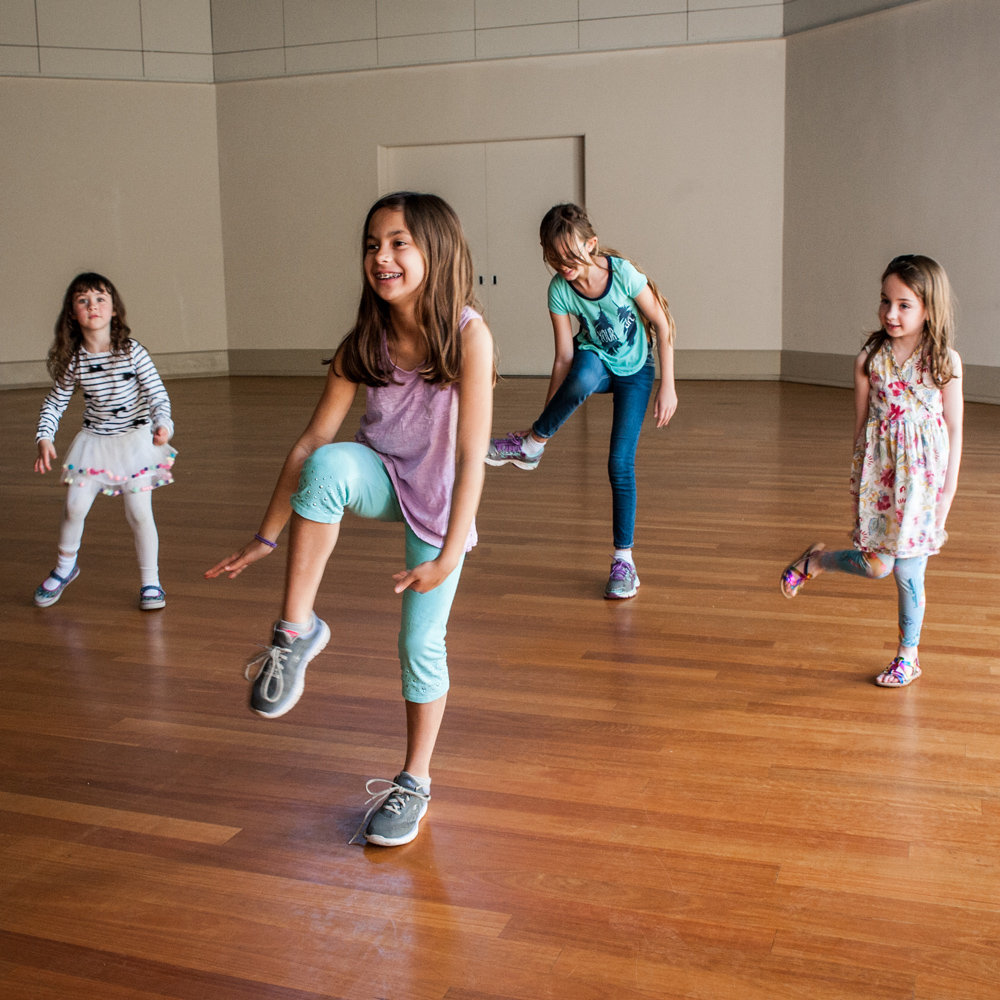In this activity, children create an original group dance by continually imitating the leader’s movements. Standing in a diamond shape, the dancer at the top “point” of the diamond in front of everyone else is always the leader, but there’s a twist: when the leader turns (either right or left), someone else will be at the top point and get to start leading the dance moves! The dance may seem well choreographed, but in reality it is fully improvised by the group working together as one.
Materials Required
- Music system
Instructions
- Before beginning the dance, “warm up” as a group. Choose a leader to perform simple and repetitive dance moves, while the other dancers imitate their actions.
- As a group of four, stand in a diamond shape. The dancer at the top “point” of the diamond in front of everyone else is the leader. The leader performs simple dance moves (waving hands in the air, jumping, clapping, etc.) while the rest of the dancers imitate the moves. Remember, the leader is the person in front of all the other dancers. Practice without music before starting the dance.
- Practice switching leaders. When the leader turns (either to the right or left), the person now standing at the top “point” of the diamond takes on the leadership role. Try rotating around the diamond a few times to practice working as a team.
- Turn on the music and get dancing! Start with a song that has a slow, steady beat and work up to faster paced songs that will really challenge the group.
Additional Tips
Try these add-on activities:
- Designate one person as the DJ. The DJ can pause the music at any time, and the dancers must immediately freeze! Or, the DJ can switch to a new song and challenge the dancers to adjust to the new beat.
- Increase the number of people in the group. Be sure to keep the same, clearly defined four points, and add people to the middle of the diamond.


